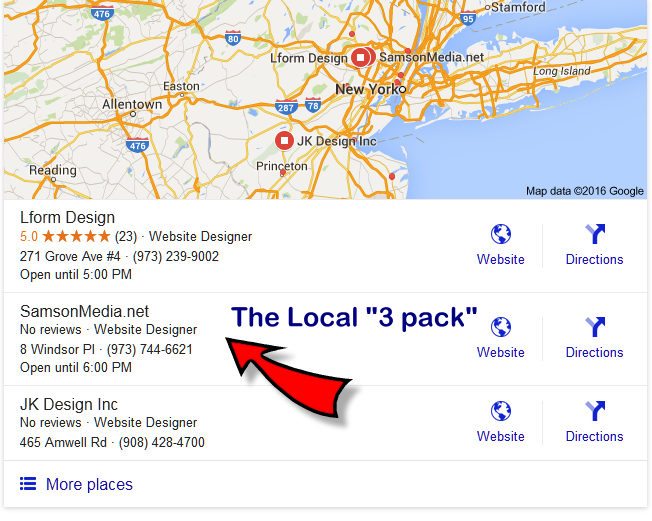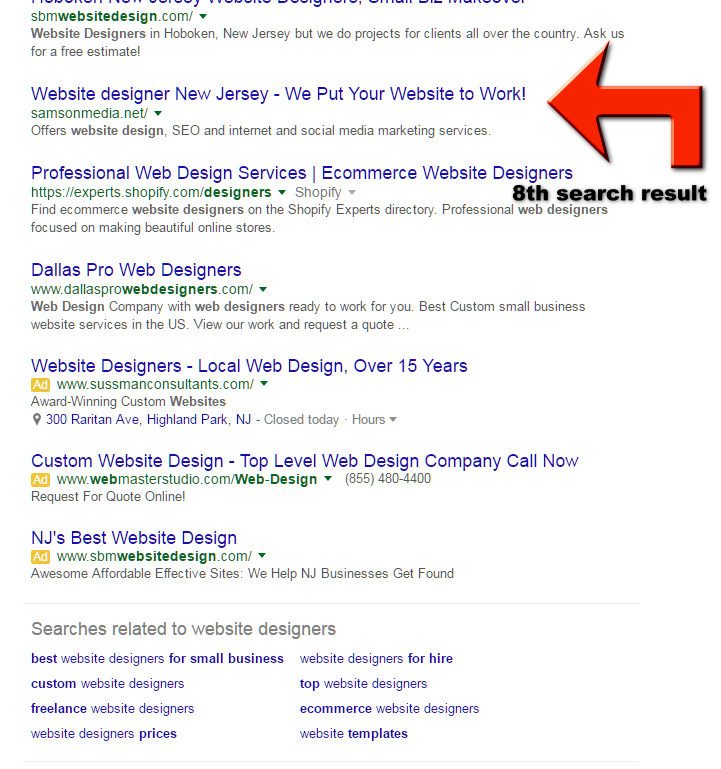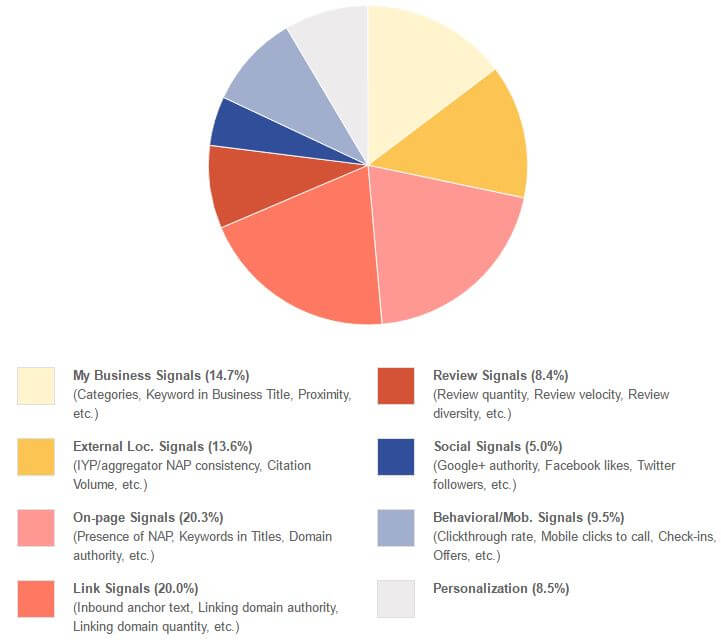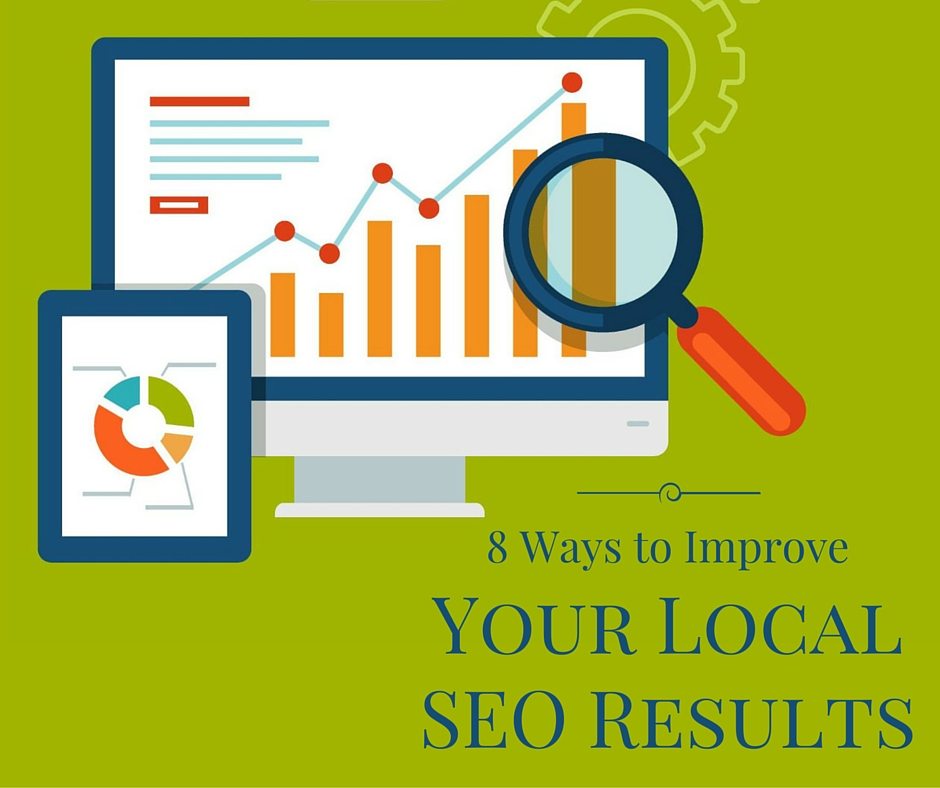Local SEO is where it’s at for many businesses. Pursuing a local SEO strategy can pay off big for companies looking to come up on page 1 of Google. Those looking to come up in national searches will find it more of an uphill climb. While it is possible, we council our clients to try to focus on a local angle first so that we can “dominate your own backyard.” More and more the success of an SEO campaign is tied to your location so why not embrace the local bias of search instead of trying to fight it?
[bctt tweet=”Local SEO success: embrace the local bias of search instead of fighting it” username=”samsonmedia”]
Samson Media is a great example. We develop websites and do Search Engine Optimization (SEO) which we can do for anyone anywhere in the world. And while we do have clients throughout the USA we have made a concerted effort to come up for locally for “website designers nj” when someone conducts a Google search.
Here you can see our anonymous (unlogged in) Google search results for “website designer nj”:

Only 3 Spaces in the Local Organic Listings — Down From Seven!
But without the “NJ” qualifier at the end, we no longer come up in the 3 Pack but further down the page, still on page 1, though:

There are several reasons for this but the main reason is that Google takes into account where the search is originating from and gives priority to local results. It only makes sense that a search originating in New York for “pet sitter” would return local results, right? What good is a Los Angeles pet sitter coming up for a search that originated in New York?
So our “3 Pack” results are relying on a different set of signals than our 8th place page 1 result. Adding “NJ” to the search query tells Google in no uncertain terms that the searcher wants website designer in New Jersey regardless where they are searching from. The unqualified, non-NJ search returns local website designers based on the fact that I’m initiating the search in New Jersey. The challenge is to try and satisfy both types of results so that you either come up in one, the other or, ideally both!
[bctt tweet=”8 things to look at before planning out your SEO strategy.” username=”samsonmedia”]
So by optimizing your site with your location in mind, here’s 8 things we look at before planning out your SEO strategy and the weight of each:

Graphic by https://searchengineland.com/local-seo-ranking-2016-beyond-251404
1. On-page signals (20.3 percent)
Yes, META tags still matter, although a lot less then they used to. But it’s a good place to start. But now there is a broader check list of on-page signals your site needs to convey that all adds up to relevance and authority.
You are going to want to consider the following key on-page local SEO elements which speak to relevance:
- Title tags
- Meta descriptions
- Header tags
- Page content
- Images
- Map
- Name, address and phone (NAP) on every page (with schema markup, ideally)
You are going to want to include some specific elements to illustrate authority, too:
- Testimonials
- Accreditations
- External reviews
Page titles, while not officially a “META tag” are critical here, so you will want to ensure you clearly indicate the service, location, and brand in the page titles. Be sure to weave in the keywords that help folks make a decision. Don’t be spammy — this can be done sensibly.
Site structure is critical here, so if you have multiple offices or locations, then ensure that it is simple for a user and a search engine to understand.
On-page really relates to how you structure your site and what you include on all the pages. The goal is to give Google what it wants in order to get the rankings you want.
[button link=”https://www.slideshare.net/genesower/why-meta-descriptions-still-matter” type=”big” newwindow=”yes”] See Our Slideshare on “Do META Tags Still Matter”[/button]
2. Link signals (20.0 percent)
With our high-level look at relevance and authority, if on-page elements are the relevance part, then link signals are one of the key ways in which we build authority.
Removing local from the picture, domain-level and page-level link signals are still the key factors driving rank. Things are not always the same in local SEO land, as location trumps many traditional factors, but they can still play a part, and often an important one, in competitive niches.
Likewise, this is a particularly difficult area to talk about in general terms, as the right links are very specific to a given business. However, I can offer some general guidelines regarding what we have seen working for our local SEO clients around the world.
When pursuing backlinks, the guiding rule should be quality. Is this a real site? Will it generate referral traffic? Is the link editorially placed? Does the link add value to the post in which it is placed? Is there something of real value on your site for people to link to?
We use a variety of tactics to build backlinks for our clients that include everything from pitching relevant bloggers to news release placements. This is probably the most difficult part of a successful SEO campaign.
3. My Business signals (14.7 percent)
Optimizing your Google My Business page is pretty much a a total pain in the ass, but it’s critical to ensure everything else since Google owns Google My Business. Need I say more?:
Half the battle is claiming your listing and verifying ownership, which we help you do if needed.
4. External location signals (13.6 percent)
Google wants to triangulate the address information on your website with the information on Google My Business, and then validate this with the information on your business from around the web. There are two key elements to consider here:
- NAP consistency. Your Name, Address and Phone number (+ your web address) is your location fingerprint. You need this to be consistent around the web.
- Citations. These are listings of your business around the web. They can range from business directories like the yellow pages through to mentions on social media platforms. Keep your information consistent so Google can trust it.
In plain English, think of external location signals like this:
- Google crawls the web looking at address details for your business.
- Google finds four different addresses.
- Google finds two different phone numbers.
- Google finds three variations of the business name.
- Google finds duplicate listings on some yellow pages style sites.
Which one is correct? Are they the same company?
Write down all your historical addresses, phone numbers and any business name or website variations and start doing some searches. Locate any duplicate or out-of-date information and get it cleaned up. Again, that is a service we can help with.
5. Behavioral/mob signals (9.5 percent)
2015 saw an increase in the value of click-throughs from the search results. Simply put, make sure you have the SEO basics in place:
- Page titles
- Meta descriptions
- Schema review markup (tells the search engine what the content means)
[button link=”https://blog.kissmetrics.com/get-started-using-schema/” type=”big”] More Info On What Schema Means[/button]
Consider search engines, but write these for the very people you are hoping will click because clicking on the search results validates your listing in the results. They came, they saw, they clicked!
6. Personalization (8.5 percent)
The search engine results are personalized for individual users based around what they search for. As I mentioned up top, Google knows where you are searching from and tries to return geographically-relevant searches first. After that it looks at other factors such as relevancy and authority. So if you’re pursuing a local SEO strategy, TELL Google where you are.
Here’s an excellent breakdown of EXACTLY the things to look for regarding SEO Personalization: https://searchengineland.com/guide/seo/personalization-search-engine-rankings
7. Review signals (8.4 percent)
Reviews help. Whether they help with specific positioning or they help by driving engagement with your listing is up for debate. I think it can be a bit of both, but it also depends on the competition.
Long story short: Get reviews, and you will reap any potential (likely small) ranking benefits. But perhaps more importantly, you will certainly enjoy improved interaction from the search results, which itself can have a positive effect.
8. Social signals (5.0 percent)
Do social signals have an impact on your rankings? No, they do not, as evidenced by this interview with Google directly:
https://www.stonetemple.com/googles-matt-cutts-understanding-social-identity-on-the-web-is-hard/
But they do help extend your brand and can drive traffic, even if it’s unmeasured for search engine rankings. But traffic is traffic, so we added it.
A HANDY DANDY INFOGRAPHIC
Infographic provided by www.seoreseller.com
BOTTOM LINE: You need to get your SEO house in order by making sure you have one service per page. Make sure your internal navigation is straight-forward and not confusing. Use all available META data, ALT tags and page title areas to add relevant keywords, claim your Google My Business Page, generate consistent citations all over the Internet, create on-going content and link, baby link!



